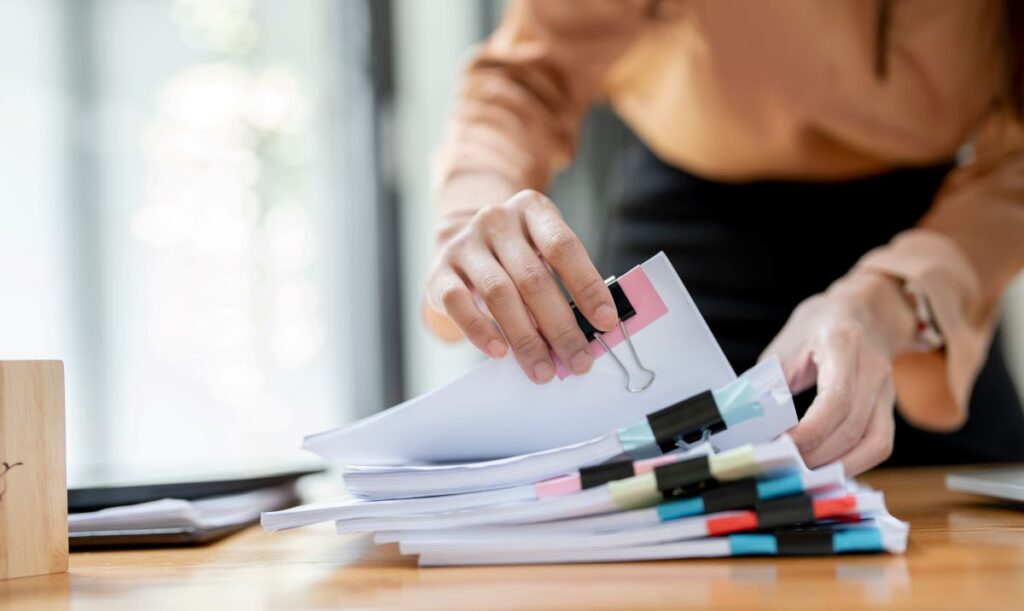The saying that teachers wear multiple hats is a sure one. They teach and play counselor, custodian, nurse, and friend (just to name a few). How can teachers do all of these things, and do them well? Organization is key. It can be tough, but staying organized is critical amongst the obvious and hidden hats teachers wear. Having an organized teaching toolbox can help lessen stress and make days more productive and predictable. Below are some organizational ideas teachers can add to their toolbox, both in their classroom and personal life.
The Organized Teacher Toolbox — In the Classroom
Classroom Layout
Classroom layout plays a large role in organization. Not only does it make it easy for you as the teacher to find the materials you need for lessons, but it helps students learn where to find things and where to put things away. This ultimately cuts down on the time it takes to transition students from one activity to another and frees up more time for direct instruction.
An easy way to give students a sense of ownership and pride in their classroom space is by allowing them to help design the layout.
Ask your students for suggestions on how to organize desks or tables. Ask them for input on where office supplies should be stored. See if they have feedback on how to assign roles for classroom jobs. By simply asking students for their thoughts and ideas, students feel valued and respected and will, in turn, show respect to their classroom organization. Ultimately, when a classroom is well organized, students feel safe, and a natural structure is created and cared for.
A Good Filing System
What do you do with all the completed work that comes in during the course of a week? There are several ways to go about organizing student work. For starters, creating a turn-in bin with labeled folders can help you easily check student work and ensure everyone completes their work. These folders are easy to grab and put in your backpack if you plan to save grading for home, as well as help students know exactly where to file the work they’ve completed.
If you prefer to not have another bin sitting around, a different but simple idea is giving each student a fix and finish folder to store in their desk. If students are not done with an assignment when a transition arrives, have them tuck that paper away in their fix and finish folder. Later, when they ask if they can have “free time,” have them check and see that that folder has no incomplete work. This is a simple way to store unfinished items and puts responsibility on the student to make sure they finish all their work.
Utilize Technology
Working smarter, not harder, is a well-known expression and for a good reason. There is an immense amount of technology out there, so why not utilize a proven system that has already been created. Whether you are looking for a good grade book (ThinkWave), a learning management system that is student friendly (Seesaw), or a way for students to continue their learning after the class period has ended (Flip), technology has a way to stay organized and get work completed.
Additionally, technology often provides an engaging platform for students to interact with, learn from, and easily showcase their work. Whether you openly and eagerly embrace any technology that comes your way or hesitate to change a system that has previously worked for you, technology is worth at least a second thought.
The Organized Teacher Toolbox — Personal Life
Not only is it important to stay organized in your classroom, but the best way to not feel mentally or emotionally weighed down is also to keep an organized personal life.
Prioritizing Tasks
A good start is by learning to prioritize tasks.Create a list of things you need to get done. Then, rank them from the most important or urgent task to the least pressing. At the end of each day, rewrite and re-rank the list so you know where your next day’s energy should be focused on. You may find that just by simply writing down your to-do’s, you already feel more organized.
Mindful Tech Use
Another way to stay organized in your personal life is to stay mindful of technology use. Technology is great in so many ways but can also drain a lot of time away. It may be helpful for you to have a home base for your phone. If you keep it on the kitchen counter, you will have to make a purposeful choice of getting up to get it. Additionally, instead of picking up your phone when you have just a few minutes to kill before leaving the house, keep a sticky note of tasks that take a short amount of time. Got 5 minutes? Vacuum the kitchen. Have 3 minutes before the chicken nuggets are done? Wipe down a few blinds. It can feel so satisfying to clean just one small area of your house.
Teachers wear so many hats. They teach, they mentor, they learn new technology, and they find a way to stay fulfilled in their personal lives. Staying organized is critical both at school and at home. Teachers can spend more time on instruction by having a thoughtful classroom layout, using a good filing system, and utilizing technology so we can work smarter not harder. At home, prioritizing tasks and being purposeful about technology use and spare moments can help make you feel more mentally present and emotionally healthy. Try out some of these organizational tips in your classroom and home, today!
Educators never stop learning; check out our available graduate degree programs to hone your skills and promote lifelong learning and academic excellence.




